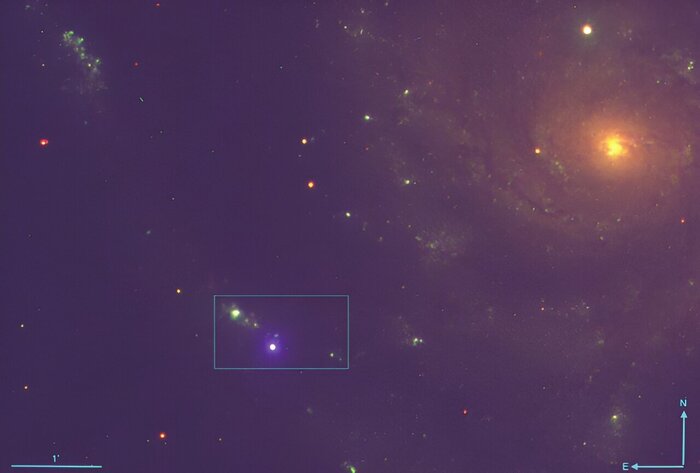Icon: enlarge
The camera delivered a black and white image: The round one is Venus, the antennae of the probe can be seen in the foreground
Photo: ESA / AP
Successful rendezvous in space: On its long-term mission to Mercury, the "BepiColombo" probe flew past Venus on Thursday.
"Everything worked," said Simon Plum from the Esa Satellite Control Center (Esoc) in Darmstadt.
The project is the first European space mission to Mercury - the planet that is closest to our sun.
Two orbiters from Germany and Japan sit on the probe.
After the probe has been swiveled into orbit around Mercury in 2025, they will examine the magnetic field, the surface and the solar winds.
Shortly before 6 am in Central Europe, the Euro-Japanese spacecraft, which cost well over a billion euros, flew past the neighboring planet on earth at a distance of over 10,000 kilometers.
The maneuver was controlled from the control center in Darmstadt.
Speculation about life on Venus
"BepiColombo" has to fly past planets to reduce the speed.
This is the only way for the spacecraft to slow down the sun's gravity and ultimately steer it into a stable orbit around Mercury at the calculated speed.
On Thursday morning, the speed was reduced by almost a tenth to around 34 kilometers per second.
"BepiColombo" flew a similar maneuver last April, when the probe approached the earth for a flyby to less than 12,700 kilometers, a stone's throw in the vastness of our solar system.
On its flight to Mercury, the smallest and fastest planet in our solar system, the probe will fly past Venus again at an altitude of just 550 kilometers and a total of six times past Mercury in August, before entering its final orbit in 2025.
After around seven years of flight time, the probe launched in 2018 will have covered around nine billion kilometers.
470 degrees thanks to the greenhouse effect
During the flight around Venus, the probe collected data and also took pictures using eleven instruments on board.
Speculations that there might be life on the neighboring planet had only recently caused a stir.
In September, astronomers announced that they had discovered the gas monophosphane in the Venusian atmosphere.
On earth, this is mainly caused by biological processes that take place in the absence of oxygen.
However, as the researchers themselves admitted, this is not reliable evidence of life.
(Read more about this here.) Nasa is now considering a mission to Venus.
Venus and Earth are almost the same size.
According to the German Aerospace Center, however, the neighboring planets have developed very differently.
The atmosphere of Venus is much denser and consists almost entirely of carbon dioxide.
This causes a very strong greenhouse effect and surface temperatures of around 470 degrees.
The existence of water and thus also of life is almost impossible.
Icon: The mirror
koe / dpa















